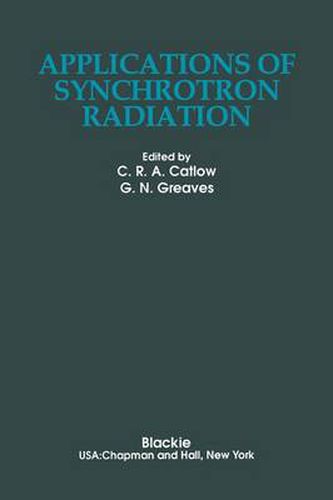Readings Newsletter
Become a Readings Member to make your shopping experience even easier.
Sign in or sign up for free!
You’re not far away from qualifying for FREE standard shipping within Australia
You’ve qualified for FREE standard shipping within Australia
The cart is loading…






This title is printed to order. This book may have been self-published. If so, we cannot guarantee the quality of the content. In the main most books will have gone through the editing process however some may not. We therefore suggest that you be aware of this before ordering this book. If in doubt check either the author or publisher’s details as we are unable to accept any returns unless they are faulty. Please contact us if you have any questions.
Synchrotron radiation became available in a routine and regular manner to the scientific community in the early 1980s. Since that time the use of techniques employing synchrotron radiation has proliferated, so that the unique properties of this form ofelectromagnetic radiation are now having a major impact on several areas of physical and biological sciences. Not only have several new techniques become available but new opportunities with existing methodologies, e.g. diffraction, have been opened up. In this book we providea surveyofsomeofthemostimportantapplications ofsynchrotron radiation, with astrongemphasison the fields ofchemistry and materials science. An introduction to the properties of the radiation and its instrumentation is given in chapter 1. The following chapters describe the use ofsynchrotron radiation in high resolution powder diffraction for structural studies of crystalline materials and in diffraction topography for imaging defects in single crystals. The role of EXAFS in investigations of amorphous and disordered crystalline solids and ofbiological systems is highlighted. The important enhancements to surface science techniques offered by synchrotron radiation are then reviewed. Later chapters describe more specialist applic ations, including trace-element analysis, protein crystallography, X-ray microscopy, and atomic and molecular spectroscopy.
$9.00 standard shipping within Australia
FREE standard shipping within Australia for orders over $100.00
Express & International shipping calculated at checkout
This title is printed to order. This book may have been self-published. If so, we cannot guarantee the quality of the content. In the main most books will have gone through the editing process however some may not. We therefore suggest that you be aware of this before ordering this book. If in doubt check either the author or publisher’s details as we are unable to accept any returns unless they are faulty. Please contact us if you have any questions.
Synchrotron radiation became available in a routine and regular manner to the scientific community in the early 1980s. Since that time the use of techniques employing synchrotron radiation has proliferated, so that the unique properties of this form ofelectromagnetic radiation are now having a major impact on several areas of physical and biological sciences. Not only have several new techniques become available but new opportunities with existing methodologies, e.g. diffraction, have been opened up. In this book we providea surveyofsomeofthemostimportantapplications ofsynchrotron radiation, with astrongemphasison the fields ofchemistry and materials science. An introduction to the properties of the radiation and its instrumentation is given in chapter 1. The following chapters describe the use ofsynchrotron radiation in high resolution powder diffraction for structural studies of crystalline materials and in diffraction topography for imaging defects in single crystals. The role of EXAFS in investigations of amorphous and disordered crystalline solids and ofbiological systems is highlighted. The important enhancements to surface science techniques offered by synchrotron radiation are then reviewed. Later chapters describe more specialist applic ations, including trace-element analysis, protein crystallography, X-ray microscopy, and atomic and molecular spectroscopy.